West Cumberland Stadium, Lonsdale Park, Workington, Cumbria
POSTCODE———————————–CA14 2DU
LOCATED————————————-Situated north of the town just off the A596 at the rear of Workington Football Clubs ground.
ORIGINAL SITE——————————Originally on an old amateur rugby league club ground that disbanded in 1909, later becoming an athletics and cycle track around 1914.
DATE CONSTRUCTED———————Developed during the early 1900’s.
DATE VENUE OPENED——————–May 27th 1933 witnessed the first time greyhound racing featured.
Meaning other sports may have taken place prior to the arrival of Greyhound Racing.
FIRST MEETING—————————–Official opening was in February 1934.
Greyhound Racing only.
LICENSED OR INDEPENDENT———-Independent
All venues covered would have to be be licensed with the government, licensed suggested in this section would refere to tracks operating under NGRC Rules.
INSIDE OR OUTSIDE HARE TYPE——Inside Sumner
Please note that the Electric Hare suggested is only a guidance and would have been in operation for a certain amount of time at this venue. Although it is not necessarily guaranteed that it was operational all the time, as other types of lure may have been used and updated as time progressed.
DISTANCES———————————-320, 530 and 760 yards.
Please note that most racing venues distances had become varied throughout the years, the ones given above were at once point set and offers only a guidance to the track size.
CIRCUMFERENCE————————–440 yards
Please note that alterations at most racing venues throughout its existence would see that the circumference of the track would vary, the one shown above offers only a guidance to the track size.
BIG RACE NAMES————————–Easter Sweepstakes, The West Cumberland Spring Cup and of course The Workington Derby held in September.
STADIUM SHARED WITH—————-Speedway, amateur football and rugby league have all featured here.
LAST MEETING—————————–March 27th 1999 (tbc)
Greyhound Racing only.
STADIUM CLOSURE DATE————-1999
Meaning other sports may have taken place after Greyhound Racing had ceased.
STADIUM DEMOLITION—————–Early 2000’s
BUILT ON SITE—————————-Nothing yet of interest built on site known of, although a temporary road was built across it in December 2009 to access a pontoon bridge constructed after the nearby main road bridge collapsed during floods.
In some cases, structure’s that originally covered the venue after the stadium had been demolished, may have been themselves demolished too, so the one described is more likely to be the one which now presently covers the site.
EVIDENCE LEFT TODAY—————–Looking from google earth, the earth scars left behind still shows the location of the track. A concrete section that was at the rear of the main stand is still evident.
FURTHER COMMENTS——————None

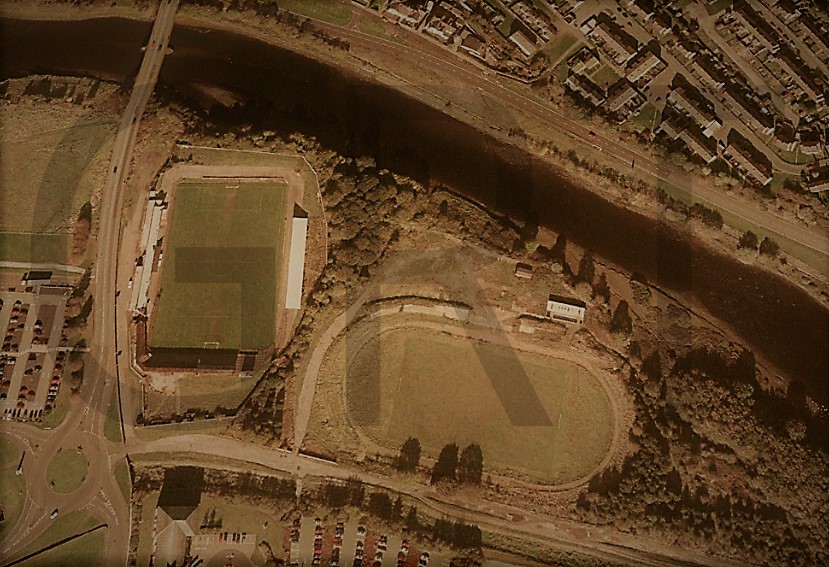




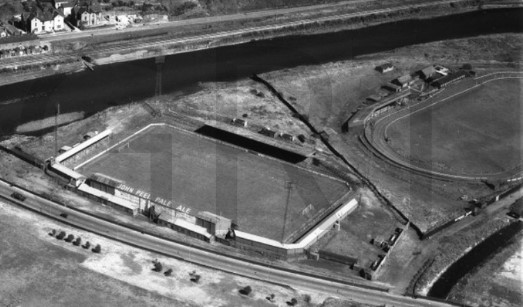
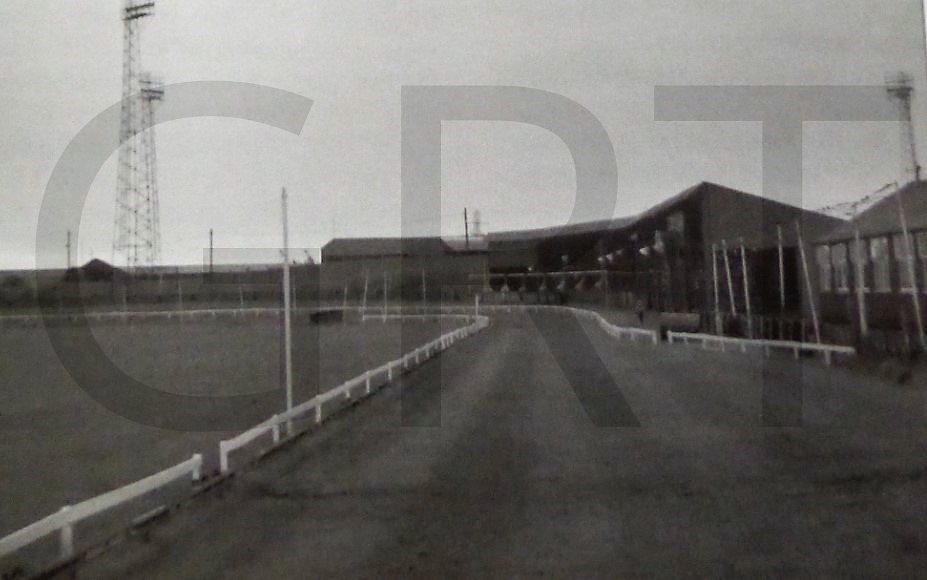
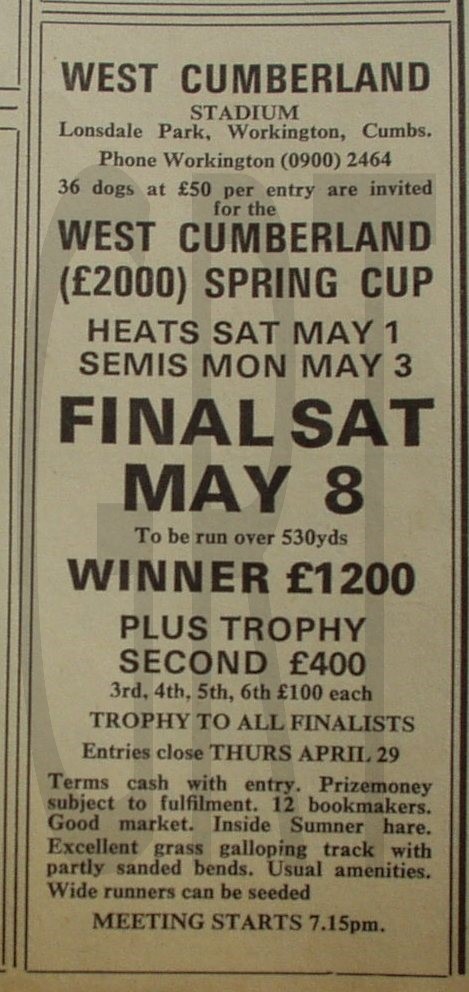





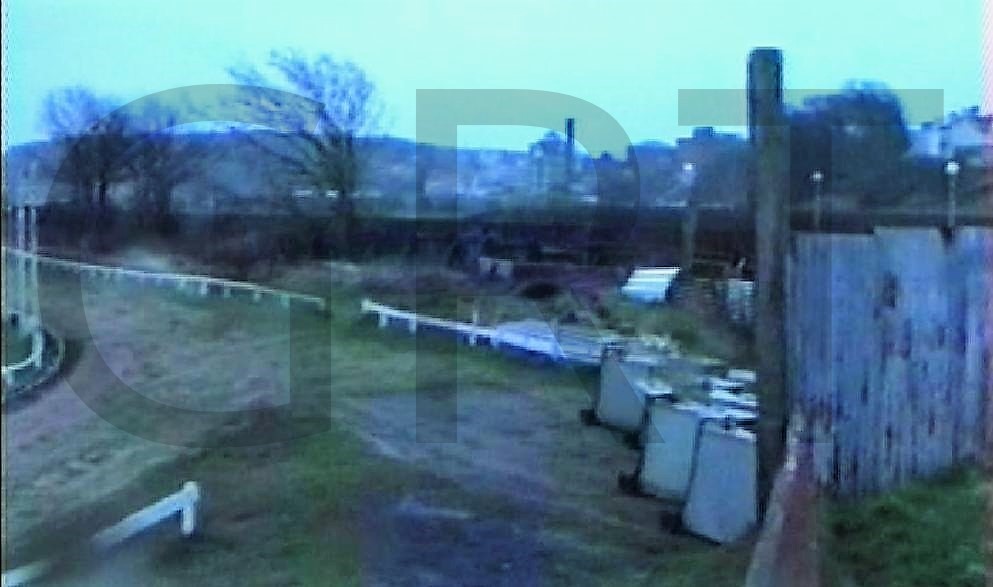



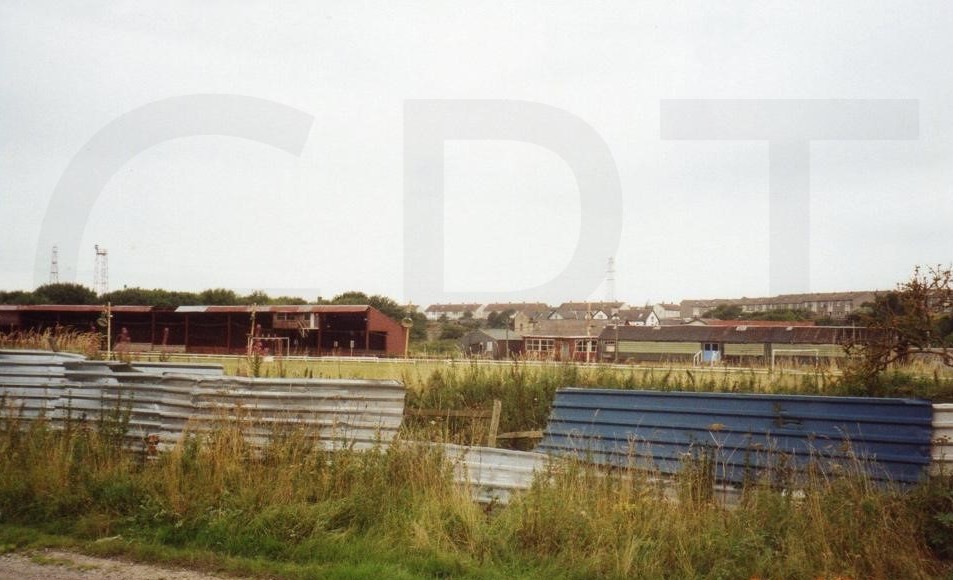

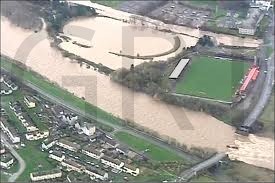
The last greyhound track to operate in Cumbria was the one at Lonsdale Park, situated in the coastal town of Workington. It was found just off the A596 half a mile north of Workington town centre on the banks of the River Derwent, next door to Workington Football Club’s present day ground.
The original land was owned by Lord Lonsdale, hence the name, which had sporting origins as far back as 1898 when Workington Zebras hosted rugby league matches there before disbanding in 1909. During 1913 Workington Athletic Football Club played a handful of matches there, then in 1914, the year of the outbreak of the First World War, a cycling and athletics cinder track was added around the football pitches perimeter. In 1921 Workington Town Football Club made it their permanent home and continued to play there for the next 16 seasons before moving on to their present ground next door. Lord Lonsdale sold the venue in 1926, and it was the new owners who introduced dirt track speedway as an experiment in September 1929.
During the early 1930’s the stadium hosted amateur rugby league once more, and also witnessed another spell of dirt track speedway in March 1931. Sadly, the new venture did not last long as the speedway team disbanded the following season after just eight meetings. Speedway returned once again in 1937 and 1938, but in its absence, Lonsdale Park witnessed the arrival of another sport, that of greyhound racing.
It made its first appearance on the 27th of May 1933 and continued during that summer months by staging just a handful of meetings. It wasn’t until the following February that it could announce its inaugural meeting, opening up as a flapping track and becoming known as the West Cumberland Greyhound Stadium. It ran six dog races over distances of 320, 530 and 760 yards, with the hounds chasing an inside Sumner type hare. It held big race events such as The Easter Sweepstake, The West Cumberland Spring Cup, The Christmas Handicap, and of course The Workington Derby, held annually in September run over the 530-yard trip. In 1986 amateur football returned once again to Lonsdale Park, with neighbours Workington Town playing just five Northern Premier League matches there, due to their own ground Borough Park having failed ground safety inspections.
Sadly, greyhound racing at Lonsdale Park came to a close in 1999, thought to be March 27th. The lack in numbers of entrants and falling attendances contributing to its demise. By 2003 all outbuildings had been removed, leaving the site littered with heaps if rubble, and a once sanded track which had now become the foundation for weeds and shrubbery. Not a lot happened to Lonsdale Park during the following years, but a tragic incident in November 2009 triggered the end of its presence. Throughout that month, constant heavy rain created extensive flooding throughout Cumbria, which saw the close by River Derwent bursting its banks. The continuous pressure forced by the river on the nearby A596 road bridge was enough to attract the attention of a traffic police officer. As the officer crossed the bridge to warn others, it collapsed beneath him, which in turn saw both him and the bridge being swept away, an event which sadly cost him his life. Yet within a week of this tragic event, the army had been called upon to construct a temporary pontoon type footbridge across the river, along with an access road which now covered the west bend of the track.
Today the footbridge has now been upgraded to carry traffic, yet the site of Lonsdale Park still lingers but only just, with perimeter walls still doing their job to locate its position, But I do fear in the coming years that the developers will get their own way and make use of a site which is presently doomed.
A programme, photograph or even memorabilia for this track is required for this page, if you can help please contact me.

Recent Comments